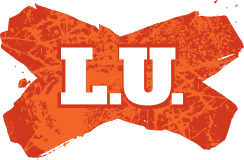Willow | GB&I
The Lord Ted Enigma
A brilliant attacker and rare talent, 'Lord Ted' Goodwin captured the imagination of Rugby League crowds. But his career was also dotted with battles against officialdom.
When 'Fearless' Frank Facer called one E Goodwin into his office, he knew he was signing a future superstar of the game. Frank had good reason to think so, and his credentials for picking talent were second to none. Since being elected as Club Secretary in 1956, Facer had attracted Brian Clay, Ian Walsh, John Raper, Graeme Langlands, and Rod Reddy to the Dragons. Goodwin was in good company.
Goodwin signed on the dotted line, for a career that was to begin in 1972, culminating in controversy when he and St George parted ways in 1978, the year of Frank Facer's death.
Nevertheless, Facer was right about Goodwin, and it wasn't long before his faith in the youngster was rewarded.
Born in Sydney in 1953, Ted Goodwin claims Māori ancestry through his mother. A Dapto junior, Goodwin represented Country before joining Saints and was quickly lauded as an ideal replacement for the great 'Changa' Langlands. In 1972, 'Lord Ted' Goodwin's career catapulted with rep honours, playing for New South Wales and Australia.
Goodwin played in three grand finals for St George. In the 1975 grand final, Ted came off second best following a dramatic head clash with Easts' Ian Schubert in the opening minutes. He also played in both grand finals in 1977 the first when Saints and Parramatta contested the historic drawn grand final. From fullback, Goodwin scored a miraculous try. He kicked ahead, won the race for the ball lunging forward and touching down just inside the dead ball line. Such was Ted's determination that he knocked himself out in the process. He backed up the next week and scored six goals and a field goal in Saints 22-0 victory over the hapless Eels.
Goodwin made eight appearances for NSW. For Australia, after his debut off the reserve bench in the second Test against New Zealand in 1972, he was selected on the 1973 Kangaroo tour (led by club skipper Langlands). Goodwin appeared in six tour matches, a Test match against Great Britain and two against France. Playing on the wing, Goodwin scored seven tries on the tour, including two in the first French Test.
Alas, a great career is not without controversy. After a sensational debut, Goodwin began to experience mixed form. Handling errors under the high ball. Some tabloid writers blamed it on the drink, some said it was the weight of expectation. Reportedly unhappy, Goodwin sought a release join Parramatta in 1975. Saints denied Goodwin's request. Instead, his captain-coach Changa Langlands took him aside. The man he was set to replace at full back gave Lord Ted some straight advice, namely to make decisions on the field, even if they turn out to be wrong. In basic terms, Langlands was simply telling Goodwin to back himself, regardless of the outcome.
The advice was spot on. In Changa's retirement year, Goodwin lifted. The following 1977 season saw Goodwin become an intergral part of the team that won the club's 14th first grade premiership, ironically against the club that tried to lure Ted away from the Dragons in 1975.
Goodwin played one last season with St George in 1978 before linking up with Newtown in 1979, watching as Saints won their 15th premiership without him. All but finished as a player, Goodwin was thrown a lifeline by Western Suburbs coach Roy Masters. Goodwin played in the forwards in 1980-1982 and relished the opportunity. He was later named in Wests' Team of the Eighties.
Lord Ted finished his playing days in NSW Country as captain-coach of Parkes and Forbes, leading them to three premierships in the Group 11 competition. After moving to Western Australia, he played with the Willigee Bears in 1989-90 in that state's competition.
Goodwin later became a referee in Perth and held a position as Development Officer with the WA Rugby League. He visited WA schools and was instrumental in the push to include the Western Reds in the national competition. In 2005 he returned east as a referee for junior league in Sutherland.
A favourite player, I never saw the enigma that was given editorial in the press. I only saw a dynamic player who got me on feet every time he touched the ball.
Today, the Goodwin legacy continues. Three of Ted's four sons, Luke, Bronx and Bryson, have played first grade Rugby League.
Ref |
http://www.jubileeavenue.com.au/hist...players_fg.php
http://www.jubileeavenue.com.au/hist...dwin_rlw_0.jpg
(Written by me)
Newspapers clippings
and Wikipedia (sources checked)
 -v-
-v-









